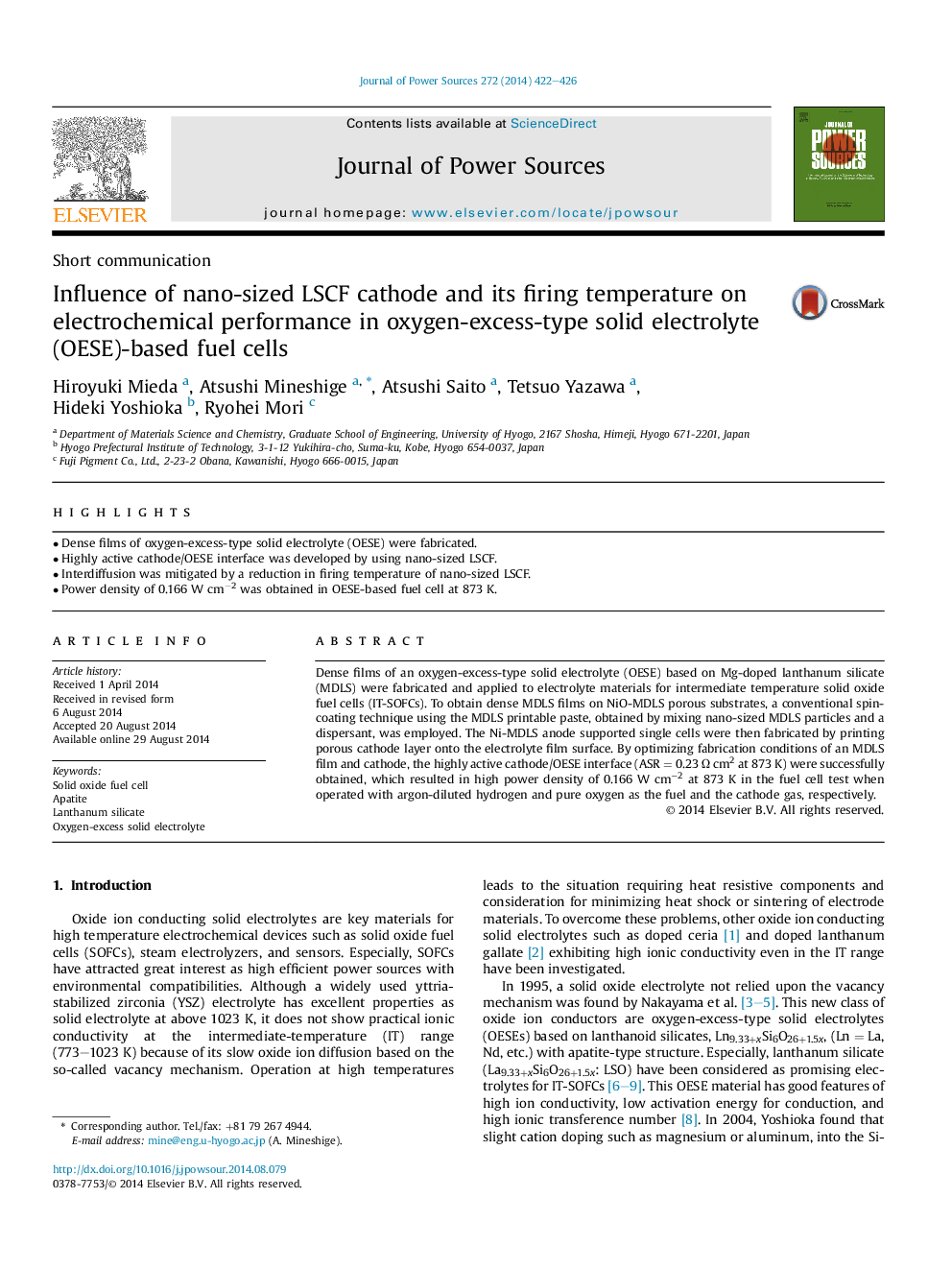| Article ID | Journal | Published Year | Pages | File Type |
|---|---|---|---|---|
| 1283943 | Journal of Power Sources | 2014 | 5 Pages |
•Dense films of oxygen-excess-type solid electrolyte (OESE) were fabricated.•Highly active cathode/OESE interface was developed by using nano-sized LSCF.•Interdiffusion was mitigated by a reduction in firing temperature of nano-sized LSCF.•Power density of 0.166 W cm−2 was obtained in OESE-based fuel cell at 873 K.
Dense films of an oxygen-excess-type solid electrolyte (OESE) based on Mg-doped lanthanum silicate (MDLS) were fabricated and applied to electrolyte materials for intermediate temperature solid oxide fuel cells (IT-SOFCs). To obtain dense MDLS films on NiO-MDLS porous substrates, a conventional spin-coating technique using the MDLS printable paste, obtained by mixing nano-sized MDLS particles and a dispersant, was employed. The Ni-MDLS anode supported single cells were then fabricated by printing porous cathode layer onto the electrolyte film surface. By optimizing fabrication conditions of an MDLS film and cathode, the highly active cathode/OESE interface (ASR = 0.23 Ω cm2 at 873 K) were successfully obtained, which resulted in high power density of 0.166 W cm−2 at 873 K in the fuel cell test when operated with argon-diluted hydrogen and pure oxygen as the fuel and the cathode gas, respectively.
